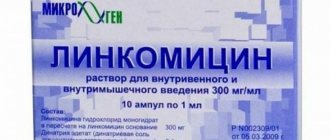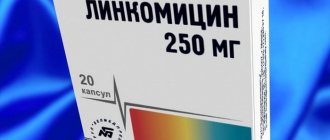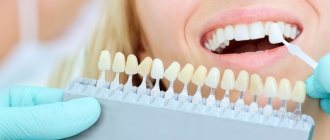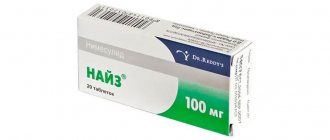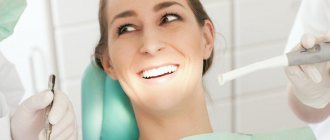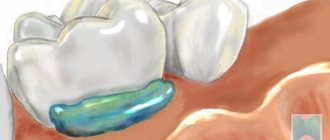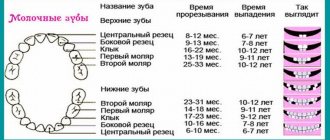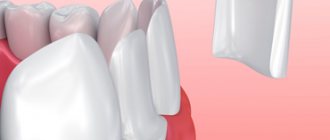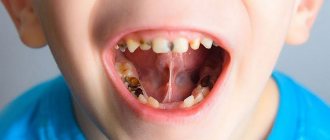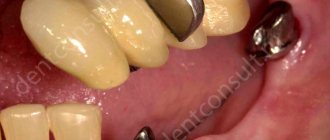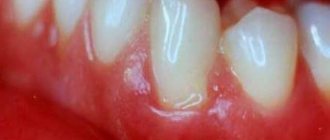What is Lincomycin
Lincomycin belongs to the group of broad-spectrum antibiotics.
This is a second-line drug that is used in cases where other antibiotics have not helped. This medicine suppresses the formation of protein in the cells of pathogenic microbes, which is what determines its antibacterial effect. The drug can act on a large number of microorganisms.
Therefore, they treat a variety of infectious diseases:
- inflammatory diseases of bones and joints (osteomyelitis, arthritis);
- respiratory diseases (pneumonia, sinusitis, lung abscess, tracheitis, bronchitis, pleurisy);
- skin diseases (erysipelas, panaritium, wound infections, furunculosis)
- inflammatory heart disease (septic endocarditis);
- dental diseases (flux, gum inflammation, and also after tooth extraction)
- mastitis;
- sepsis.
Lincomycin is an antibiotic that inhibits the growth of microbial cells and exhibits bacteriostatic or bactericidal characteristics depending on the sensitivity and concentration of the bacteria.
In therapeutic doses it exhibits a bacteriostatic effect. At high concentrations, it damages the cell walls of microbes and leads to their death.
Lincomycin is prescribed for infectious or infectious-inflammatory diseases. Most often these are pathologies of the respiratory tract, bones and joints, and soft tissues.
The intensity of absorption on an empty stomach reaches 30%, and after eating - only 5%.
How long after treatment can you drink alcohol?
If the patient is being treated with antibiotics, then alcohol should be completely avoided throughout the entire therapy. After completing the course of treatment, alcohol can be taken only after 8-12 hours.
This is the minimum period of time that must pass after taking the last dose of the medicine. In some cases it is necessary to wait a longer period.
For example, with liver and kidney disease, the elimination of the drug slows down, and it may be necessary to abstain from alcohol for a longer period after the last dose of the drug.
Compatibility of alcohol and antibiotics
The use of antibiotics in clinical practice has radically changed the treatment of infectious pathologies. It made it possible to radically reduce mortality and the incidence of severe complications of all bacterial nosologies.
General characteristics of lincomycin
The purpose of a particular antibacterial agent also depends on the pharmacological characteristics of the drug, its ability to accumulate in certain tissues of the body, as well as the range of microorganisms that are sensitive to its action.
The last point has become especially acute in recent decades due to the active development of antibiotic resistance of many pathogens of infectious pathologies to the drugs used.
Therefore, the indications for prescribing many antibiotics have undergone major changes. Lincomycin was no exception here.
Pharmacological properties of the drug
Lincomycin belongs to the group of lincosamides. The ampoules or tablets contain additional substances, but they do not have an important pharmacological role.
Lincomycin blocks a specific ribosomal subunit of pathogenic microorganisms, which makes protein synthesis impossible by their cells.
This in turn stops the further proliferation of bacteria, and also increases their sensitivity to the immune reactions of the patient’s body. Some studies have shown that lincomycin, at high concentrations in the blood, also has a bactericidal effect - that is, it directly destroys the integrity of microbial cells.
Like other antibiotics, it has absolutely no effect on viruses, which must be taken into account when prescribing the drug.
Cross-resistance has also been shown to exist between lincomycin and clindamycin.
Pharmacodynamics and elimination of the drug from the body
The antibiotic can be used parenterally (intravenously or intramuscularly) or orally (tablets or capsules). The form of the drug is chosen by the doctor based on the severity of the pathology and the general condition of the patient.
Lincomycin has affinity for bone tissue, which allows it to be used for bacterial pathology.
The drug is partially metabolized into inactive forms in the liver. But most of it is excreted unchanged by the kidneys.
The half-life of lincomycin is about 5-6 hours, which also necessitates two- or three-time use of the antibiotic.
The attending physician also needs to take into account the peculiarities of drug metabolism in case of impaired liver or kidney function. In these conditions, you need to reduce the dosage of the drug or choose other antibiotics. All these factors, one way or another, determine the list of indications for the use of lincomycin.
Use of lincomycin hydrochloride for certain pathologies
Pathologies of the respiratory system
Streptococcal infection is not the main cause of respiratory tract diseases. And diphtheria, fortunately, is much less common today than before the era of vaccination. However, here too the drug lincomycin has found its application.
The reason for this is quite simple - the increase in resistance to conventional medications (macrolides, penicillins, cephalosporins), which are most often used for these pathologies.
Especially when it comes to streptococcal infections, which are often common in hospitals.
In clinical recommendations, lincomycin is assigned the role of a reserve drug for diphtheria or advanced streptococcal infections of the lower respiratory tract (bronchitis, pneumonia). The dosage depends on the severity of the pathology.
Musculoskeletal infections
Lincomycin is a drug that has affinity for bone tissue. It is capable of creating complexes with calcium at the molecular level. At the same time, these compounds are less stable than when using tetracycline drugs (doxycycline).
This reduces the risk of developing side effects when using it from the musculoskeletal system with a good clinical effect.
The microflora that most often causes primary or secondary osteomyelitis includes streptococci and staphylococci. Therefore, here lincomycin is in the first line of drugs for treatment.
Applications in Dentistry
It is precisely because of its ability to create complex compounds that the drug lincomycin has found its niche of use also in dentists. The antibiotic was used even for ordinary toothache.
This provided a longer lasting effect than when treating diseases of other body systems with the same antibiotic. Indications for prescribing lincomycin include:
- bacterial stomatitis or gingivitis;
- osteomyelitis of the upper or lower jaw;
- ulcerative gingivitis;
- periodontitis;
- alveolitis;
- local abscesses;
- periodontitis.
Lincomycin was produced especially for dental practice in the form of ointments and special patches. This helped to significantly reduce the incidence of side effects with almost similar effectiveness.
However, it should be noted that in the past, lincomycin had a wider range of uses in dentistry. Today it is effective only for streptococcal, staphylococcal and bacteroid infections. Therefore, there has been a significant shift to other antibacterial agents.
Pathologies of ENT organs
Another traditional area of prescribing lincomycin is otolaryngology. Here, the ability of this antibiotic to accumulate in bone tissue and respiratory epithelium is actively used. Lincomycin is prescribed for diphtheria of atypical localization (nose, nasopharynx, sinuses) in addition to specific serum.
Often, to help accurately verify the pathogen, a bacteriological study is carried out to study the sensitivity of the isolated pathogen. For this purpose, a swab is taken from the nasopharynx or other affected area.
The test result usually comes back within a few days. It is especially important in situations where the initial prescription of other drugs has proven ineffective.
Use in surgery
In addition to osteomyelitis, for a number of surgical pathologies, lincomycin injections are included in international treatment recommendations. First of all, we are talking about staphylococcal damage to the soft tissues of the body.
It has long been known that Staphylococcus aureus is the most common cause of the development of inflammatory pathologies in the hospital, which require consultation with a surgeon and immediate antibiotic therapy. Therefore, lincomycin is actively used for the following pathologies:
- mastitis;
- erysipelas;
- inflammation of the lymph nodes (lymphadenitis);
- paronychia;
- furunculosis;
- gangrene.
In this case, it must be combined with one or two more antibacterial agents, mainly cephalosporins, carbapenems or fluoroquinolones.
Considering the severity of this pathology, lincomycin is prescribed in the maximum doses allowed for a particular patient.
Compatibility with alcohol and food
Lincomycin and alcohol are absolutely incompatible. This is due to the general mechanisms of metabolism that occurs in the liver.
When drinking alcohol, even in small doses, during antibiotic therapy with this drug, there is a high risk of developing toxic hepatitis, as well as increasing the overall toxic effect on other systems and organs.
With parenteral (intravenous or intramuscular) and local administration of lincomycin, food does not affect its metabolism. However, if the patient takes an antibiotic in the form of tablets or capsules, then he needs to do this an hour before or two after it. This is due to the fact that food can reduce the bioavailability of lincomycin.
General contraindications for use
Lincomycin crosses the placental barrier well and can have a toxic effect on the fetus during pregnancy.
For the same reasons, lincomycin is not prescribed to infants and during lactation.
Absolute contraindications also include decompensation of liver or kidney function, since taking an antibiotic can aggravate this condition.
There are also reports that lincomycin may exacerbate myasthenia gravis in patients. This is due to the fact that it reduces the effectiveness of drugs that are used for this pathology.
Also, lincomycin should not be prescribed to patients who have had episodes of allergic reactions to it in the past.
The drug has an active interaction with many other medications, so it cannot be prescribed simultaneously with muscle relaxants, narcotic analgesics, absorbents, macrolides and pyridostigmine.
Today, lincomycin effectively affects a fairly narrow range of bacteria, mainly gram-positive: streptococci, staphylococci, corynebacteria, clostridia, bacteroides.
Since this drug has a completely different chemical structure and composition, this allows it to be prescribed in such situations.
How are anti-smoking pills compatible with alcohol? Medicine and alcohol are generally incompatible. The interaction between alcohol and pills is generally unpredictable.
Alcohol and liver pills are only conditionally compatible. In addition, even experienced chemists cannot predict the outcome of interactions between antibiotics and alcohol.
The effect of alcohol on taking medications can not only be an unpleasant surprise, but in some cases this combination can be dangerous for the health and life of such an experimenter.
Therefore, you can also search by area of use and range of application of this medication. Thank you for supporting the project “Liberation - treatment of alcoholism, drug addiction and smoking.”
Will it be bad for me if I take an increased dose of Tabex (small doses do not work on me) and want to drink properly in the near future? Do not buy parapharmaceuticals, which are praised on many websites as a good remedy for alcohol.
We in the family were convinced that after such a deceptive remedy, my husband developed an allergy to alcohol that did not go away even when he stopped taking this unfortunate additive.
A great table to find out which medicine you should not take with alcohol! A good table of interactions between drugs and alcohol, only extreme options are listed here.
But if the doses are small and there is little ethyl alcohol in the blood, then the combination may not be so serious.
By the way, this applies to the “fire water” itself - it’s better not to drink it than to drink too much.
I take half a tablet exclusively at night to fall asleep and such treatment lasts no more than 3 maximum 4 days, and then I switch to herbs.
And so that he does not justify the cure to himself, but as it should be done by the VC (consilium of doctors). It’s not so simple with medications either.
Look in the table above, tablets that enhance the effects of alcohol, how they work and how many there are! Conversely, alcohol distorts the effect of drugs and drugs.
Such reviews about compatibility are usually not left, but there are plenty of statements on the Internet that if there is a little alcohol with the tablet, then it’s okay - there are plenty of them. Especially on replies to mail-ru.
Lincomycin is a broad-spectrum antibacterial drug. The active ingredient of the drug is lincomycin hydrochloride monohydrate.
It perfectly fights most known microorganisms by enabling complex processes in our body. Its frequent use is due to the fact that it copes with serious illnesses caused by streptococci and staphylococci, as well as bacteria resistant to penicillin.
Therefore, this antibiotic is prescribed for infections of the lower respiratory tract, joints and bones, as well as purulent diseases of the skin and soft tissues: mastitis, furunculosis, erysipelas and others. And if the drug is used externally, then it is necessary to do this with extreme caution in case of fungal infections of the skin.
After taking the tablet, the active substance of the antibiotic is perfectly absorbed from the stomach, and its maximum concentration in the blood occurs after 2-4 hours. Thus, the medicine quickly reaches most organs.
Lincomycin and alcohol
The compatibility of Lincomycin and alcohol can cause a lack of effect of therapy, and with excessive and regular consumption of alcohol, severe adverse reactions develop. Like any antibiotic, the drug seriously loads the entire liver and other vital organs, and if the tablets are also taken with ethanol, then complications are possible.
↑ Are you having a problem? Need more information? Type in the form and press Enter!
Lincomycin does not react with alcoholic beverages. Because of this, it is allowed to consume a small dose of alcohol during the treatment course.
However, alcohol dependence, in which the patient drinks regularly, or taking increased amounts of ethanol negatively affects therapy.
The effectiveness of the product directly depends on its correct administration. If you take the medicine on an empty stomach, a third of the active substance is absorbed, which allows you to obtain a therapeutic concentration in the blood plasma. Taking antibacterial medication after meals is 6 times less effective.
Since alcoholic beverages are almost always drunk with food, the absorption of the antibiotic will be minimal.
Acetaldehyde also negatively affects the cellular structures of the liver where the drug is processed. Because of this, the drug is eliminated from the body several times faster.
In addition to worsening the results of therapy, such compatibility saturates some tissues with calcium. Cells become dehydrated, stop moving and die.
↑
Short description
This is an antibiotic prescribed for the treatment of infectious lesions of the respiratory system, inflammation in muscle tissue, bone structures, and joints.
The main active substance of the product is effectively used to eliminate the following pathologies:
- mastitis - an inflammatory process in the mammary gland;
- arthritis – infection of joints and bones;
- diseases of the cardiovascular system of a bacterial nature;
- inflammation in the oral cavity;
- skin diseases - boils, infection of lesions, complications after surgery;
- sepsis due to blood poisoning;
- pneumonia, purulent pleurisy, bronchitis.
Almost always, an antibacterial drug is prescribed for diseases caused by pathogenic microorganisms and parasites.
Like any antibiotic, the medicine often causes side reactions such as nausea with vomiting, headache, bowel dysfunction, rash, muscle weakness, and increased blood pressure. If you do not take the tablets with enough water, the stomach lining will become irritated.
↑ https://myweak.ru/alkogolizm/lekarstva/linkomitsin-sovmestimost.html
Alcoholism and antibacterial drugs are incompatible things. Treatment for this combination will not be effective. If you follow strict mixing rules and drink no more than 50 g of a quality drink, you can avoid negative complications.
However, regular alcohol abuse not only neutralizes the entire therapeutic result, but also seriously burdens the body, which already suffers from infectious pathology if the drug was prescribed. Therefore, it is better to completely abstain from alcohol during the course.
↑
Use for intoxication
Since a hangover is a state of alcohol poisoning, taking antibacterial tablets in this case is prohibited.
If you feel unwell (nausea with vomiting, dry mouth, headache, dizziness, general weakness, diarrhea), you need to call an ambulance so that specialists can install a drip to speed up the removal of acetaldehyde from the blood and support the heart and liver.
If you also take medicine in this state, the load on the body will only increase, and there will be no detrimental effect on the infection due to the minimal absorption of the medicine. Therefore, you need to wait until ethanol is completely excreted in the urine.
↑
Complications
If the capsules are taken together with alcohol, the following adverse reactions develop:
- Nausea, vomiting.
- Abnormal stool in the form of constipation, diarrhea.
- Pain syndrome in the abdominal cavity.
- Rash, red spots on the skin.
- Migraine.
- Increased blood pressure.
- Swelling.
- Dizziness, fainting.
- Muscle weakness.
- Anaphylactic shock.
Exceeding the permissible dose of alcohol negatively affects the therapeutic effect, reduces the protective properties, which delays the elimination of the infection.
Since breakdown occurs in the liver, the increased load on the organ causes jaundice, which can be fatal. Combination with alcohol accelerates the reduction of leukocytes, develops leukopenia, and aggravates the symptoms of infectious pathology.
↑
When can you take an antibiotic?
After drinking vodka, cognac or another drink with ethyl alcohol, you must wait at least a few hours before taking the antibiotic. The waiting period can be increased to one day.
This applies to the situation if the dose does not exceed one drink. If you regularly abuse it, it is better to stop taking the medicine, as the therapy will not bring any results.
↑
When is the best time to drink if you are taking medication?
After taking the tablets, you need to wait 8-12 hours. During this time, the blood will be cleared of the drug. However, if there are problems with the liver or kidneys, the elimination period increases, which must be taken into account. If the course is completely completed, then you can start drinking alcohol after 10 days.
↑
Lincomycin and beer
Concomitant use with beer is prohibited. As a result of the interaction of substances, a double load occurs on the liver and kidneys.
A person exhausted from fighting bacteria will have an increased risk of developing side effects:
- nausea;
- vomit;
- weakness;
- swelling;
- headache;
- allergic reactions;
- disturbance of consciousness;
- high blood pressure;
- hematopoietic disorder.
When taken simultaneously with alcohol, the removal of the drug from the body is twice as fast as normal.
↑
Organs affected by the toxin
The combined use of pharmacological agents and alcohol has a toxic effect on the internal organs and environments of the body. Alcohol, entering into a chemical reaction with a medicine, leads to poisoning, disrupts physiological processes, enhances or weakens the healing properties of drugs.
The liver suffers more than other organs. She gets hit twice. Many medications have a side effect - hepatotoxicity, destroy cells, and disrupt the physiology of the organ. In the liver, alcohol breaks down to ethanal, a substance 20-30 times more toxic than ethanol, which causes the death of hepatocytes.
Dangerous groups of drugs for the organ in combination with alcohol:
- anti-inflammatory;
- hormonal;
- antibacterial;
- antifungal;
- glucose control agents for diabetes mellitus;
- anti-tuberculosis;
- cytostatics (chemotherapy drugs);
- tranquilizers (anti-epileptic, psychotropic).
In second place among the internal organs exposed to the harmful effects of alcohol together with medications are the heart and vascular system. Strong drinks during drug therapy constrict blood vessels and increase blood pressure. The simultaneous intake of alcohol and chemical substances leads to failure of the myocardium and increases the risk of developing an attack of angina pectoris and a heart attack.
A mixture of ethanol and pharmaceuticals disrupts the quality of the blood and reduces clotting. This is dangerous due to internal bleeding and strokes.
↑
State of the nervous system under the influence of alcohol and drugs
The autonomic nervous system, which is responsible for the coordinated functionality of all internal organs, is no less susceptible to negative influence. Under the influence of toxic substances, a chain reaction occurs, which is manifested by a disorder of the gastrointestinal tract (stomach, pancreas, small intestine), kidneys, and endocrine glands.
↑
Rules for taking medications and alcohol
Drinking alcohol during treatment minimizes the clinical effect of therapy and creates a risk of developing complications of the disease.
If this cannot be avoided, follow the rules of behavior that will reduce the occurrence of negative consequences:
- Do not drink strong drinks (vodka, cognac, whiskey), choose dry wine (100-150 ml), beer (no more than 300 ml). Don't drink alcohol on an empty stomach.
- The interval between taking the medicine and alcohol should be at least 2 hours.
- To reduce the toxic effect, take medications that protect the liver (hepatoprotectors), pancreas (pancreatin), and stomach (antacids ─ Rennie, Almagel).
If a person takes antiviral medications for colds, anti-inflammatory drugs, alcohol in moderation does not pose a threat to the body.
Alcoholic drinks during treatment are strictly contraindicated in cases of liver cirrhosis, severe infectious diseases, and during a course of chemotherapy.
↑
Medicines, alcohol and chronic diseases
If a person has chronic diseases, simultaneous use of alcohol and medications is potentially dangerous for the functioning of vital organs. Since patients systematically take prescribed medications, the influence of alcohol can lead to negative consequences.
People with chronic heart disease (angina pectoris, heart defects) develop arrhythmias of varying severity. Heart attacks with severe pain syndrome develop, which is not relieved by Nitroglycerin, and the risk of developing myocardial infarction increases significantly.
In case of chronic liver diseases (viral hepatitis, hepatosis), alcohol during treatment can become a trigger in the development of cirrhosis and hepatocellular carcinoma (cancer).
Drinking alcohol during cirrhosis leads to the following consequences:
- bleeding into the abdominal cavity;
- liver decomposition, infection, peritonitis;
- hepatic coma;
- death.
If a person is on long-term treatment with sedatives, psychotropic drugs, tranquilizers, he is contraindicated in drinking alcohol. This leads to severe depression and the appearance of obsessive states (hallucinations, phobias). Suicidal feelings develop. Such a patient needs constant monitoring and assistance from a psychiatrist.
↑
The most dangerous combinations and consequences
The combination of alcohol and chemical-based drugs can lead to serious disorders in the body, and in some cases to fatal consequences.
List of medications and their side effects in combination with alcohol:
| Name of group, drug | Negative results of interaction |
| Neuroleptics (tranquilizers, anticonvulsants, hypnotics) | Severe intoxication, up to cerebral coma |
| CNS stimulants (Theophedrine, Ephedrine, Caffeine) | Rapid increase in blood pressure, hypertensive crisis |
| Antihypertensives (Captofrin, Enalapril, Enap-N), diuretics (Indapamide, Furosemide) | Sudden drop in pressure, collapse |
| Analgesics, anti-inflammatory | Increased toxic substances in the blood, general poisoning of the body |
| Acetylsalicylic acid (Aspirin) | Acute gastritis, perforation of gastric ulcer and 12-PC |
| Paracetamol | Toxic liver damage |
| Hypoglycemic (Glibenclamide, Glipizide, Metformin, Phenformin), insulin | A sharp decrease in blood sugar levels, hypoglycemic coma |
↑
What is Lincomycin used for?
Lincomycin tablets and Lincomycin injections are prescribed for the following diseases:
- diseases of the bones and joints of an infectious nature, the development of which was provoked by microorganisms sensitive to the drug (osteomyelitis, septic arthritis);
- infectious diseases of the ENT organs and respiratory tract, provoked by sensitive microorganisms (used for sore throat, sinusitis, otitis media, bronchitis, pneumonia, tracheitis, etc.);
- diseases of the skin and soft tissues that are provoked by microorganisms sensitive to the product (abscess, purulent wounds, mastitis, furunculosis, erysipelas, etc.).
- Lincomycin-AKOS is used externally for inflammatory and purulent diseases of soft tissues and skin, which were caused by microorganisms sensitive to the active ingredient.
Lincomycin is used in dentistry to treat purulent and infectious processes that occur in the oral cavity. In particular, Lincomycin in dentistry can be prescribed for the treatment of periodontitis, periodontitis, gingivitis, purulent abscesses, etc. Whether there are indications for the use of Lincomycin is determined by the dentist individually.
This drug should not be used during therapy by people who are highly sensitive to antibiotics belonging to the lincosamide group. Not used to treat patients suffering from severe kidney and liver diseases. Not used to treat children under 6 years of age.
If the patient has been prescribed Lincomycin injections, the instructions for use must be carefully followed during the treatment process. The drug in ampoules can be administered intravenously and intramuscularly.
The daily dose of the drug for an adult patient should be no more than 1.8 g; if the disease is severe, the doctor can increase it to 2.4 g. The drug is administered three times a day, with the interval between injections being 8 hours.
For children, the drug should be administered at a dose of 10-20 mg per 1 kg of body weight per day. Lincomycin is administered intravenously by drip; before administration, the solution is diluted with an isotonic sodium chloride solution.
For infectious diseases, Lincomycin capsules are also prescribed. The instructions for use recommend taking the drug in capsules for sore throat, as well as for sinusitis, either 1 hour before a meal, or 2 hours after taking it.
The tablets cannot be chewed, they must be swallowed whole with plenty of liquid. The drug in tablets should be taken at regular intervals, dividing its daily dose.
For children whose body weight exceeds 25 kg, the daily dose should be determined at the rate of 30 mg of the drug per 1 kg of weight.
When using the medicine in dentistry, as well as in the treatment of other infectious diseases, as a rule, Lincomycin is prescribed 500 mg three times a day. For severe symptoms, the dose can be increased to 500 mg of the drug four times a day.
As a rule, the course of treatment lasts from 1 to 2 weeks. Sometimes the duration of treatment is up to 3 weeks (for example, with osteomyelitis).
If the patient has liver or kidney dysfunction, the dose should be adjusted individually.
Lincomycin ointment is prescribed externally. The instructions for use indicate that Lincomycin-AKOS ointment should be applied directly to the affected area in a thin layer. This procedure must be done 2-3 times a day.
Lincomycin is a potent antibiotic. However, not everyone can take this drug; it has contraindications:
- You should not take an antibiotic if you have liver or kidney failure.
- This drug should not be taken by pregnant or breastfeeding women.
- Lincomycin is not prescribed to children under 6 years of age.
- This medicine should not be taken if you are allergic to antibiotics.
Therefore, in this physiological condition, this antibiotic should only be prescribed when there is no safer alternative.
med-antibiotiki.ru
Lincomycin hydrochloride is the most common drug used in dentistry. Why? Let's find out below about the pros and cons of this drug.
The main healing substance of the drug is a natural antibacteriostatic antibiotic. Its main task is to identify and block protein production by gram-positive cocci and anaerobes.
It is used to treat:
- purulent inflammation of soft and bone tissues;
- infection of the ENT organs and upper respiratory tract;
- damage by microorganisms to the skin;
How does the drug interact with alcohol?
Lincomycin eliminates the production of bacterial protein compounds, stopping the spread of infection in the bud. The active substance of the drug is hydrochloride monohydrate, which destroys gram-positive bacteria. The mechanism of action is based on a complex interaction with bacterial ribosomes, which leads to the death of pathogenic microflora and increased immunity.
With a high concentration of the drug in the blood, the integrity of harmful cells is destroyed. It is allowed to use an antibiotic to eliminate inflammation of the oral cavity and to treat toothache. The spectrum of action of Lincomycin extends to:
- bacteroides;
- streptococci;
- corynebacteria;
- staphylococci;
- clostridia.
The medicine is not able to block the spread of gram-negative bacteria and protozoan viruses. Most of the active substance of the drug is excreted unchanged by the kidneys. The half-life of the drug is 6 hours. The absorption of Lincomycin becomes minimal if used after meals. For this reason, administration is carried out strictly on an empty stomach. Doctors admit that the drug is compatible with small doses of alcohol.
The antibiotic creates complex complexes with calcium at the molecular level, which has a positive effect on the condition of bones. As a result, the likelihood of developing diseases of the musculoskeletal system is reduced. Hydrochloride monohydrate effectively eliminates purulent-necrotic processes. Lincomycin in injection form can be used as part of complex therapy for the treatment of lower respiratory tract infections.
The active substance of the antibiotic does not react with ethanol, which avoids many dangerous complications. However, Lincomycin is broken down by liver cells, which are destroyed by alcohol. Drinking alcohol during treatment reduces the effectiveness of the medication, which affects the outcome of therapy.
Large doses of alcohol cause intoxication and increase the side effects of the drug several times. All alcohol-containing drinks have a negative effect. Alcohol reduces the effectiveness of the antibiotic in enhancing immunity. The effect of alcoholic beverages affects the nervous system, provoking a state of stress.
General contraindications for use
Since lincomycin is an antibiotic, its use may not always go unnoticed. Side effects most often include severe headaches and nausea, digestive disorders, rashes and heartburn. Itching of the skin, hives, muscle weakness, high blood pressure, etc. may occur.
If a person has the slightest intolerance to one or another component that is part of the drug, then it is better to refuse it. Also, patients suffering from renal and liver failure are also better off avoiding lincomycin.
The drug should not be used during pregnancy, breastfeeding and children under six years of age.
What happens in case of overdose
To date, there have been no serious cases of a patient suffering from an overdose of this drug. If you are treated with lincomycin for a long time, while using large doses, this can provoke the manifestation of pseudomembranous colitis or candidiasis infection.
Perhaps these two ailments will make themselves known at the same time. In such a case, you should immediately stop treatment with lincomycin and seek help from specialists.
Interaction with other drugs
1) Anti-inflammatory and non-steroidal drugs combined with lincomycin can cause respiratory failure or complete arrest in the patient;
2) Antidiarrheals taken simultaneously with the drug may increase the risk of developing pseudomembranous colitis;
3) It is prohibited to carry out a course of treatment with the drug lincomycin together with the use of inhalational anesthetics.
Lincomycin traditionally belongs to reserve antibiotics, which are used for severe diseases if other drugs prescribed in the first place do not work.
Interaction between alcohol and lincomycin.
The interaction of alcohol, even beer, with lincomycin can lead to adverse effects:
- During illness, a person has a very weak immune system. Frequent drinking only worsens the situation, thus making the illness last longer and more severe, and sometimes even lead to complications;
- Antibiotics are processed by the liver, and if you add alcohol, the load increases significantly. Enzymes do not have time to process everything, and ethanol begins to accumulate in the body. If continued in this manner, it can lead to liver failure and, in some cases, death.
- It's no secret that alcohol reduces the effect of any medicine.
- Including lincomycin. It is worth taking medications on an empty stomach to increase absorption into the body. Alcohol reduces or neutralizes the effect of the antibiotic, which leads to complications of treatment and new side effects.
- Do not forget that alcohol increases all the side effects of the medicine many times over.
- Antibiotics in interaction with alcohol lead to disorders of the nervous system.
Important! Even a glass of beer drunk at the same time as antibiotics can lead to serious consequences!
Possible consequences
Like any antibiotic, Lincomycin and alcohol should not be taken at the same time, even if the alcohol content in the drink is low. This can lead to dire consequences:
- Being in a disease process, the human body has a weakened immune system. Systematic use of alcohol leads to an even greater deterioration of the immune system. And the course of the disease will be long and difficult. This will lead to complications of the disease.
- Disposal of the antibiotic occurs in the liver. When drinking alcohol along with the drug, the load on this organ increases. Ethanol also negatively affects the metabolism of the drug and reduces the effect of liver enzymes. The breakdown of toxic substances decreases, alcohol begins to accumulate in the body. You may get additional complications, such as vomiting, nausea, dizziness, and convulsions. If you do not stop drinking alcohol, your liver will stop working and an infection will develop, which can be fatal.
- Alcohol reduces the effect of any drug, including Lincomycin. You can take the medicine on an empty stomach, and the absorption of the components reaches 30%. If you take the product after eating food, the effectiveness drops to 5% or less. Alcoholic drinks with food lead to a decrease in the concentration of drug components in the body. The antibiotic does not have the desired effect on microorganisms. This means that the treatment will be ineffective. Delaying it can lead to aggravation of the disease and cause adverse reactions.
- Alcohol greatly increases the side effects of the antibiotic. Therefore, even a small amount of alcohol can lead to unpleasant consequences, ranging from diarrhea to severe intoxication. This contributes to the almost complete removal of drug components from the body. This means that there is no need to talk about its effective impact.
- Antibiotics and alcohol individually have a negative effect on the central nervous system, and when taken together they can cause serious system disorders.
After you have completed a course of antibiotics, you should not immediately start taking alcoholic beverages. Substances accumulate in the body and continue to have their effect for some time. They are completely eliminated after a few days, and in this particular case after 10 days. Only after this time can you drink alcohol.
lekhar.ru
The biggest danger of mixing alcohol and antibiotics is that the medicinal properties are neutralized. The drug is poorly absorbed when drinking alcohol and is eliminated much faster. Drinking large amounts of alcohol can lead to the following symptoms:
- nausea and vomiting;
- headache;
- general weakness;
- stomach upset.
Important! When alcohol and antibiotics are combined, immunity is significantly reduced.
Side effects of mixing lincomycin with alcohol: In addition to general poor health, vomiting and nausea, stomach pain, rashes, diarrhea or constipation may occur.
The main danger of compatibility between Lincomycin and alcohol is the neutralization of the therapeutic effect. This is due to the deterioration of absorption of the drug due to alcohol consumption and the acceleration of its elimination from the body. Due to such effects, the required concentration of the active substance is not achieved in the blood.
In addition, high doses of alcohol often lead to vomiting, which removes the drug from the body partially or completely. At the same time, alcoholic drinks reduce immunity, which is necessary to fight infections. As a result, the treatment process is significantly delayed.
Lincomycin is an antibiotic that is used to treat infectious diseases. Patients who are prescribed it often wonder whether it is possible to combine the drug with alcohol. Is this not dangerous, and what should I do, and can I drink during the treatment period if I really want to?
The antibiotic Lincomycin belongs to the group of lincosamides that inhibit the proliferation of microbes. In therapeutic doses, it has a bacteriostatic effect, and when exceeded, it destroys the cell walls of microbes, which leads to the death of microorganisms.
The drug is active mainly against gram-positive bacteria. Most gram-negative bacteria are resistant to its action.
The active substance of the drug is lincomycin hydrochloride monohydrate. It enters into reversible binding with the 50S subunit of the bacterial ribosome, as a result of which protein production is disrupted. This provokes the destruction of the microorganism.
The main indication for the use of Lincomycin is the treatment of severe forms of infectious and infectious-inflammatory diseases of the respiratory tract, soft tissues, bones and joints.
These include:
- sepsis;
- osteomyelitis;
- lung abscess with localization inside the parenchyma;
- pneumonia;
- septic endocarditis;
- erysipelas;
- purulent pleurisy;
- surgical and accidental wound infections.
Interaction
Lincomycin and ethanol do not react in any way with each other. Therefore, it is possible to drink a little alcohol while taking an antibiotic. However, higher doses of alcohol can have an indirect effect on the entire healing process.
The drug is very sensitive when taken simultaneously with food and drinks. When administered on an empty stomach, up to 30% of the dose of the active substance is absorbed, resulting in its therapeutic concentration in the blood. However, when taken after meals, absorption is less than 5%.
Alcohol is usually not drunk on an empty stomach, so the absorption of the drug when combined with alcohol will be reduced. In addition, ethanol damages liver cells, and it is in this organ that Lincomycin is metabolized. Against this background, it is possible to accelerate the elimination of the drug from the body by 1.5 or even 2 times.
When the attending physician is asked whether it is possible to combine alcohol and medications, he is primarily interested in the purposes of drinking alcohol. If a person simply does not want to give up strong drinks, it is useless to forbid him something.
But there are situations when among friends, when you refuse to drink, questions begin, and you are simply embarrassed to talk about your illnesses and the medications you are taking.
Sometimes there are still cases where a small amount of alcohol is allowed, but the dosage and time interval between taking alcohol and medications must be observed.
Of course, this is not allowed in all cases; there are medications that are strictly incompatible with alcohol. So are lincomycin and alcohol compatible or not? In order to understand this, you need to learn more about the drug itself.
Drug overdose
This drug is antimicrobial and antiparasitic, in other words, an antibiotic
This drug is antimicrobial and antiparasitic, in other words, an antibiotic. Lincomycin is quite effective in its action and is a broad-spectrum drug.
Every person has been sick at least once in their life. Sometimes it happens that for a speedy recovery you have to take antibiotics.
Lincomycin and alcohol: compatibility, how long it takes, consequences – Bad habits
It is almost impossible to cure infectious diseases without antibiotics.
Drugs in this group are used to inhibit the development of microorganisms. Sometimes the course takes more than one week until the desired effect is achieved.
Various events occur during the treatment period. Sometimes you have to be in a company where there is alcohol.
Let's consider whether it is possible to simultaneously take Lincomycin and alcohol during therapy: compatibility and consequences for the body vary. To avoid trouble, having learned the whole truth, the patient will be able to refuse the feast.
Brief characteristics of the drug
Lincomycin is one of the modern effective antibiotics. Its use is permitted after a doctor's prescription.
Self-medication is not recommended. It is usually prescribed when first-line antibiotics have failed to combat the disease.
The dosage must be determined. The doctor selects the form of the drug. If you follow the instructions and recommendations in the instructions, side effects can be avoided.
Lincomycin is an antibiotic used to fight gram-positive bacteria
The main purpose of Lincomycin, which belongs to the lincosamides, is to combat pathogenic microorganisms. However, its activity is not the same in relation to different groups.
It is recommended to use the product against gram-positive bacteria, viruses, fungi, and protozoa. It is ineffective in the fight against gram-negative creatures.
Composition of the drug
To figure out whether you can drink alcohol while taking Lincomycin, you need to study its composition.
The main active ingredient of capsules and solution for injection is lincomycin.
Its amount in solution is 300 mg per 1 ml. The product acts on microbial cells, inhibiting protein synthesis.
It is absorbed into the blood quickly, but when taken together with food and drinks, the effect weakens. Easily penetrates the placenta and penetrates bone formations.
Lincomycin - structural formula of the active substance of the drug
The list of auxiliary ingredients depends on the release form of Lincomycin. The solution contains water and disodium edetate.
Gelatin, calcium stearate, and microcrystalline cellulose are added to the ampoules. Lincomycin-based ointments contain potato starch, paraffin, petroleum jelly, and zinc oxide.
Indications for prescribing medication
The spectrum of action of the drug is quite wide. It is used in different areas, which is why so much attention is paid to the question of whether Lincomycin can be combined with alcohol.
The appointment is made by the attending physician if the patient has various diseases:
- mastitis;
- arthritis;
- pneumonia;
- furunculosis;
- sepsis;
- pleurisy;
- septic endocarditis;
- bronchitis;
- sinusitis and others.
It is prescribed for dental problems. To prevent inflammatory processes, it is recommended to take it after tooth extraction.
Used to rinse the sinuses for sinusitis. The ointment is used for external treatment of the skin.
Lincomycin is often used in dentistry and in the treatment of sinusitis.
There are a number of diseases and conditions in which Lincomycin can be aggressive towards the body:
- renal failure;
- pregnancy;
- age up to 6 years;
- breastfeeding a baby.
It has been laboratory proven that Lincomycin does not interact with alcohol. This statement assumes that drinking up to 100 ml of alcohol during treatment is permissible.
However, the doctor will then make a reservation that drinking alcohol-containing drinks is undesirable. Usually the medicine is prescribed as part of complex therapy. The effectiveness of the products will be reduced if ethyl is used.
Doctors recommend limiting alcohol intake while taking Lincomycin.
Vodka and other alcohol-containing drinks weaken the patient’s immunity. The body relaxes and stops fighting microorganisms, despite the fact that the medicine is taken in the right dose.
Lincomycin and alcohol compatibility are allowed on the same day, but not at the same time. You cannot take the capsule and drink it with alcohol.
It is advisable to pause for at least 8 hours after taking the drug in the morning.
Over such a long period, the substance will be completely absorbed by the body, and its remnants will be removed by the excretory system.
The exception is for people with liver problems. They remove toxins and drugs more slowly.
Consequences for the body
It happens that it is not possible to maintain the above interval, knowing that it is undesirable to drink alcohol immediately after Lincomycin. In such cases, side effects may occur.
Side effects may occur if you drink alcohol while taking Lincomycin.
Against the background of a disulfiram-like reaction, the following is noted:
- nausea;
- headache;
- cardiopalmus;
- hyperthermia of the skin of the upper body;
- dyspnea;
- tremors or cramps of the limbs.
If unpleasant symptoms are detected, it is necessary to take measures to cleanse the stomach. The patient is induced to vomit and given plenty of water to drink. An enema may be needed. In case of severe condition, you should immediately consult a doctor.
Conclusion
Having figured out how to use Lincomycin and alcohol, compatibility and consequences can be adjusted independently.
But it is better to do without drinking alcohol during any therapy. The disease will go away faster, and there will be enough holidays ahead.
Source:
Is it possible to take Lincomycin with alcohol: compatibility, consequences, rules of combination
Lincomycin is an antibiotic that is used to treat infectious diseases. Patients who are prescribed it often wonder whether it is possible to combine the drug with alcohol. Is this not dangerous, and what should I do, and can I drink during the treatment period if I really want to?
Is it possible to combine the antibiotic Lincomycin with alcohol? - We treat everything
Many people know that alcohol does not combine with certain medications. Doctors warn about this when prescribing this or that medication, manufacturers say, prescribing this item in the instructions.
In some cases, taking medications while intoxicated can even lead to death. The most dangerous is the combination of alcoholic beverages and antibiotic drugs.
But is it really true that all antibiotics cannot be combined with intoxicating drinks? What about Lincomycin, a fairly frequently prescribed drug of this particular series. Are Lincomycin and alcohol compatible, or will you have to completely give up drinking when treating with this drug? What consequences will such treatment lead to?
Lincomycin is compatible with alcohol
More information about the drug
This antibiotic belongs to the class of lincosamides (medicines that work to inhibit the activity of pathogenic microflora). It is available in the form of injections and capsules.
The mechanism of operation of the product is based on stopping the production of bacterial protein compounds and the subsequent destruction of the most harmful microflora.
The medication is effective against the following types of pathogens:
- gram-negative anaerobes: mycoplasma, bacteroides;
- anaerobic spore-forming bacteria (for example, clostridia);
- gram-positive bacteria: corynebacterium diphtheria, streptococci, staphylococci, pneumococci.
But Lincomycin loses its strength when fighting enterococci, protozoan viruses, fungi and gram-negative bacteria. This medication is a prescription drug and is available in pharmacies upon presentation of a prescription.
Lincomycin is available in several forms
The active component of Lincomycin is hydrochloride monohydrate. This compound binds to bacterial ribosomes, which causes the cessation of protein production and the subsequent death of pathogens.
Indications for use
The use of this medication is recommended for the treatment of inflammatory diseases of joint, bone and muscle tissue, as well as for severe infectious pathologies of the respiratory tract. Such diseases include:
- mastitis (inflammatory pathologies of the mammary glands);
- infections of joints and bones (gout, arthritis, osteomyelitis);
- inflammatory heart infections (septic endocarditis);
- dental problems (inflammation after tooth extraction, damage to gum tissue, gumboils);
- skin infections (erysipelas, furunculosis, wound infection, postoperative complications);
- sepsis (severe inflammatory reaction that develops as a result of infections passing through the bloodstream);
- ailments of the respiratory system (abscess of lung tissue with a lesion of the parenchyma, sinusitis, pneumonia, bronchitis, purulent pleurisy).
Source: https://xn—3-6kcbs1bedgtd4byf.xn--p1ai/kurenie/linkomitsin-i-alkogol-sovmestimost-cherez-skolko-mozhno-posledstviya.html
Patients taking Lincomycin often wonder whether this medicine is compatible with alcohol. Any doctor will answer that it is wrong to combine medications and alcohol, as this can lead to negative consequences and even health problems. To avoid this, it is important to understand the dangers of simultaneous use of medication and alcohol.
Features of taking “Lincomycin”
The attending physician prescribes the drug “Lincomycin” in the presence of inflammatory processes in joint, muscle and bone tissue, as well as in infectious diseases of the respiratory tract.
These include:
- mastitis (inflammation process in the breast);
- bone and joint infection (arthritis);
- damage to the cardiovascular system;
- problems with the oral cavity (the onset of the inflammatory process after tooth extraction, gum damage);
- skin diseases (furunculosis, wound infection, complications after surgery);
- sepsis (inflammation that began after the infection spread through the bloodstream);
- diseases of the respiratory system (pneumonia, bronchitis, purulent pleurisy).
Most often, the medicine is prescribed for diseases caused by parasites and microorganisms.
After taking the medicine, the patient may experience side effects. The most common are:
- urges of nausea;
- vomit;
- headaches;
- constipation or diarrhea;
- rashes on the skin surface, redness;
- muscle weakness;
- high blood pressure;
- stomach problems.
If you are pregnant or breastfeeding, you should take this medication very carefully and only after consulting your doctor. It is also prohibited to take the drug if you have an individual intolerance to the components in its composition.
The drug can negatively affect the body of those who suffer from kidney failure; most often they are not prescribed such a medicine. The medicine is also prohibited for children under 6 years of age. No dangerous cases of Lincomycin overdose have been recorded, but a course of treatment should be started under the strict supervision of a doctor.
Benefits of the drug
The main active ingredient in the drug is a natural antibacteriostatic antibiotic. Its main purpose is to detect and block protein production by anaerobes and gram-positive cocci.
Most often the drug is used for:
- elimination of inflammatory processes in tissues;
- getting rid of upper respiratory tract infection;
- suppression of the action of microorganisms.
The medicine is most effective against enterococci. When taken simultaneously with other antibiotics and antimicrobial drugs, improvement in the patient’s condition can be achieved already on the 2-3rd day of use.
The components of the drug are characterized by good absorption - more than 50%. Almost all components of the taken product react with blood proteins and penetrate the body tissues through the bloodstream.
The active components of “Lincomycin” can accumulate both in the lesion and in other cells. This ensures the highly toxic effect of the drug against pathogens. In addition, the active components do not pass through the blood-encephalitis barrier, which provides protection to the human brain.
The components of the product quickly penetrate the membrane of nerve cells and remain there. Being inside the nerves, the drug can affect the speed of the excitation and inhibition reaction. It is for this reason that drinking alcoholic beverages is prohibited when taking Lincomycin.
Can you drink alcohol and Lincomycin together?
This question worries many people. When determining the compatibility of “Lincomycin” and alcohol, scientists discovered that the antibiotic can provoke regression processes in a person’s personal development.
After this conclusion, doctors forbade treating children of puberty with this antibiotic. The fact is that at this age a large amount of natural alcohols accumulates in the child’s body.
They affect nerve cells, provoking their rapid division. Such reactions lead to the appearance of characteristic features in the child.
When there is a lack or excess of connections, the brain sends special signals that are aimed at restoring balance.
For this reason, the child develops a need to eat sweet foods. Glucose is the main supplier of the alcohol reaction. Children quickly get used to the negative effects of various substances on the central nervous system - drugs, ethyl and tobacco.
It was found that if, during the processing of the signal for the start of substitution, a substance active in relation to other microorganisms (bacteriophage, antibiotic, antimicrobial) is located near the nerve cell, then the human body will begin to use their elements to build the necessary compounds.
In childhood, this is dangerous due to the appearance of pathologies in muscle and bone tissue. At a later age, such exposure leads to problems with the synthesis of the main building component in the body - calcium.
Joint reception
Is it possible to drink alcohol with Lincomycin? Everyone knows that taking antibiotics and alcohol at the same time is prohibited. Most often, doctors explain this by saying that as a result, the effect of the drug significantly worsens. But such a combination is dangerous on a deep, cellular level.
The interaction of ethanol derivatives and antimicrobial drugs leads to calcification of some tissues. Due to dehydration, cells cannot metabolize calcium ions at the required rate, which leads to membranes hardening to the point of complete obstruction.
Side effects
“Lincomycin” with alcohol: is it possible, are there any exceptions? When taking the drug and alcohol together, the patient may experience the following side effects:
- gagging;
- bursting of blood vessels;
- redness of the skin, rashes;
- prolonged headache;
- increased blood pressure;
- fainting state.
The first signs of deterioration in the patient’s condition may appear either immediately or after some time (30 minutes). The medicine can have this effect when taking any alcohol.
Poisoning can occur when drinking too much alcohol. But, depending on the characteristics of each organism, a large amount of light drinks (wine, beer) can also lead to this.
“Lincomycin and alcohol”: how long before you can drink alcohol? According to the established rules for taking the drug, you can drink alcohol for the first time only 10 days after the end of treatment. You can start taking antibacterial drugs only after complete removal of alcohol residues from the body:
- when taken orally or intramuscularly - no earlier than 72 hours after drinking alcohol;
- when taken orally, at least a day must pass from the last moment of taking an alcoholic drink.
Possible negative consequences
In some cases, with regular intake of alcohol and Lincomycin, an inflammatory process may begin in the inner lining of the heart. This condition can be caused by bacteria that, under the influence of alcohol, have been able to develop resistance to the drug.
Using part of the ethanol, cocci can quickly reach the myocardium through the bloodstream, where, having penetrated into the muscle tissue, they form an inflammatory focus. Septic endocarditis is a disease that is almost impossible to cure.
Metabolism of the drug occurs to a greater extent in the liver. This process is very similar to the processing of ethyl alcohol. As a result of overload or incorrect reaction, icteric syndrome may begin, which will ultimately lead to the death of the patient.
When taking antimicrobial agents, the number of leukocytes in the blood begins to decrease significantly; alcohol only enhances this process, which leads to leukopenia. With leukopenia, the overall clinical picture of the disease worsens. The bone marrow stops producing the required number of immune cells, and the disease begins to become more and more dangerous.
Source: https://FB.ru/article/399789/linkomitsin-i-alkogol-sovmestimost-posledstviya-sovmestnogo-priema
